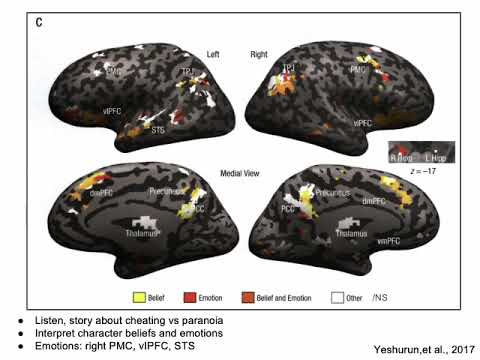 Speaker: Stephanie Preston @prestos
Speaker: Stephanie Preston @prestos
 Affiliation: University of Michigan
Affiliation: University of Michigan
Title: Improving Empathy through Narrative: A Neuropsychology Approach
Abstract: People struggle to empathize with disparate others. The neuropsychology of empathy and altruism has grown tremendously in the last half-century. In the basic science of empathy, researchers often use stories as a controllable way to elicit empathy and altruism in the laboratory. Meanwhile, in the science of literature and narrative, researchers test whether reading real stories increases trait empathy or empathy for characters and the people like them. Combining the expertise of these fields, we can predict and measure when people are most engaged in stories and take the other’s perspective–but also aim to help as a result.

 Long abstract
Long abstract
Modern society has been described as suffering from a paucity of empathy. The science of empathy grew tremendously in the last half-century, across subfields of psychology and neuroscience. This growth spanned from understanding empathy as a personality, as a state, in development, in the brain, and as an impairment in psychopathology. We can apply this trove of knowledge to improve empathy in the real world, particularly toward disparate others. This goal would be facilitated by combining the basic science of empathy with the science of literature and narrative. These two subfields often hold similar aims and employ similar methods, while largely proceeding in parallel, in silos that do not connect with one another. For example, empathy researchers use stories to convey a target’s situation and their emotional response to it, but not because they are interested in stories per se, but because stories offer a convenient, controllable way to elicit prosocial responses in the laboratory. Conversely, research on literature and narrative is inherently interested in the story, but similarly examines whether reading increases trait empathy, perspective taking, and support for disparate others (e.g., a different race, gender, ethnicity). Combining the expertise of these two fields, we can predict and measure which features of stories best engage readers and render them likely to help in the real world. This theoretical presentation will describe how the perception-action model (PAM) of empathy can be combined with the altruistic response model (ARM) to explain when narrative and literature do—and do not—bridge the gap between self and other in a productive way. This is particularly important because of concerns with so called, “trauma porn” or with sympathy during reading as an aesthetic enterprise, wherein readers are drawn into suffering, but mostly use the experience to consider their own suffering or to enjoy sympathizing, rather than to change how they see the world or when they want to help. It is time to apply our extensive empirical understanding of empathy to bridge the gap between us and them.
de Waal, F. B., & Preston, S. D. (2017). Mammalian empathy: Behavioural manifestations and neural basis. Nature Reviews Neuroscience, 18(8), 498-509.
Preston, S. D. (2013). The origins of altruism in offspring care. Psychological Bulletin, 139(6), 1305.
Preston, S. D., & de Waal, F. B. (2002). Empathy: Its ultimate and proximate bases. Behavioral and Brain Sciences, 25(1), 1-20.

